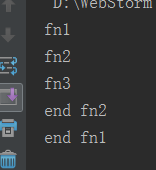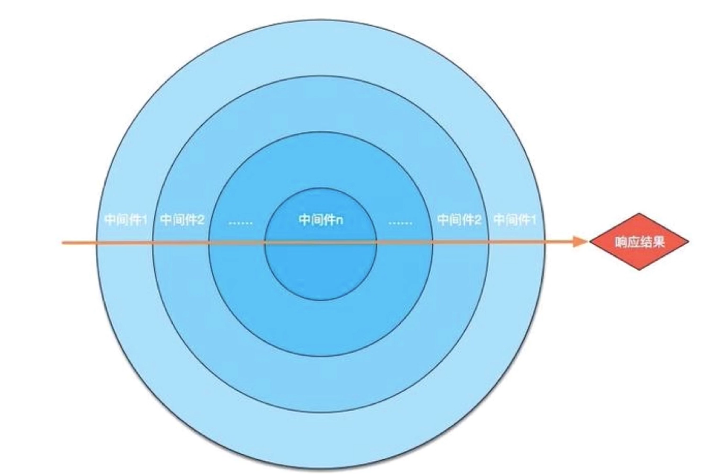这部分的代码在https://github.com/zhaobao1830/koa2中demo文件夹中
Koa就是基于node自带的http模块,经过封装,监听端口,实现ctx(上下文)管理,中间件管理等
例子1、koa监听3000端口,在页面输出值
1 const Koa = require('koa') 2 const app = new Koa() 3 4 app.use((ctx,next) => { 5 ctx.body = 'hello koa2' 6 }) 7 8 app.listen(3000, function () { 9 console.log('启动3000端口') 10 })
ctx 是封装了request和response的上下文
next 的作用就是执行下一个中间件
APP 启动应用
例子2、http监听3000端口,页面返回值
1 const http = require('http') 2 3 const server = http.createServer((req,res) => { 4 res.writeHead('200') 5 res.end('hello node') 6 }) 7 server.listen(3000, function () { 8 console.log('启动了3000端口') 9 })
例子3、使用http封装一个简单的web服务
1 const http = require('http') 2 3 class application{ 4 constructor() { 5 this.callback = () => {} 6 } 7 8 use(callback) { 9 this.callback = callback 10 } 11 12 listen(...args) { 13 const server = http.createServer((req,res) => { 14 this.callback(req, res) 15 }) 16 server.listen(...args) 17 } 18 } 19 20 module.exports = application
1 const Koa3 = require('./index3') 2 const app = new Koa3() 3 4 app.use((req,res) => { 5 res.writeHead(200) 6 res.end('hello Koa3') 7 }) 8 9 app.listen(3003, function () { 10 console.log('启动3003端口') 11 })
例子4:
koa2中的ctx就是上下文,用来挂载request和response对象
js的get和set方法
1 const yese = { 2 _name: '夜色', 3 get name() { 4 return this._name 5 }, 6 set name(val) { 7 console.log('new name is' + val) 8 this._name = val 9 } 10 } 11 12 console.log(yese.name) 13 yese.name = '荷塘月色' 14 console.log(yese.name)
加入ctx上下文,封装了http里的request和response
index7.js
1 const http = require('http') 2 3 //req是http模块里的 4 let request = { 5 get url () { 6 return this.req.url 7 } 8 } 9 10 let response = { 11 get body () { 12 return this._body 13 }, 14 set body (val) { 15 this._body = val 16 } 17 } 18 19 // 把上面定义的request和response挂载到context对象中 20 let context = { 21 get url () { 22 return this.request.url 23 }, 24 get body () { 25 return this.response.body 26 }, 27 set body (val) { 28 this.response.body = val 29 } 30 } 31 32 33 class application{ 34 constructor() { 35 // 把上面定义的context,request,response挂载到application中 36 this.context = context 37 this.request = request 38 this.response = response 39 } 40 41 use(callback) { 42 this.callback = callback 43 } 44 listen(...args) { 45 const server = http.createServer(async (req, res) => { 46 let ctx = this.createCtx(req,res) 47 await this.callback(ctx) 48 ctx.res.end(ctx.body) 49 }) 50 server.listen(...args) 51 } 52 createCtx (req, res) { 53 let ctx = Object.create(this.context) 54 ctx.request = Object.create(this.request) 55 ctx.response = Object.create(this.response) 56 // 把http里的req赋值给ctx.request的req和ctx.req上 57 ctx.req = ctx.request.req = req 58 ctx.res = ctx.response.req = res 59 return ctx 60 } 61 } 62 63 module.exports = application
调用
1 const Koa3 = require('./index7') 2 const app = new Koa3() 3 4 app.use(async (ctx) => { 5 ctx.body = 'hello Koa2 '+ ctx.url 6 }) 7 8 app.listen(3003, function () { 9 console.log('启动3003端口') 10 })
例子5、(这个例子是同步的)compose中间件
1 function add(x, y) { 2 return x + y 3 } 4 function double(z) { 5 return z*2 6 } 7 8 const middlewares = [add, double] 9 let len = middlewares.length 10 // 中间件 11 function compose(midds) { 12 console.log('midds:'+midds) 13 return (...args) => { 14 console.log(...args) 15 // 初始值 16 let res = midds[0](...args) 17 console.log(res) 18 for (let i = 1; i < len; i++) { 19 res = midds[i](res) 20 } 21 return res 22 } 23 } 24 const fn = compose(middlewares) 25 const res = fn(1,2) 26 console.log(res)
例子6、

自己实现的一个简单的compose代码
1 async function fn1(next) { 2 console.log('fn1') 3 await next() 4 console.log('end fn1') 5 } 6 async function fn2(next) { 7 console.log('fn2') 8 await delay() 9 await next() 10 console.log('end fn2') 11 } 12 function fn3() { 13 console.log('fn3') 14 } 15 16 function delay() { 17 return new Promise((resolve, reject) => { 18 setTimeout(() => { 19 resolve() 20 }, 2000) 21 }) 22 } 23 24 function compose (middlewares) { 25 return function () { 26 return dispatch(0) 27 28 function dispatch(i) { 29 let fn = middlewares[i] 30 if(!fn) { 31 return Promise.resolve() 32 } 33 // 这俩行是compose的核心代码 34 return Promise.resolve(fn(function next() { 35 return dispatch(i+1) 36 })) 37 } 38 } 39 40 } 41 42 const middlewares = [fn1, fn2, fn3] 43 44 const finalfn = compose(middlewares) 45 finalfn()
运行结果为:

个人理解:核心就是先执行方法里的值,遇到了next(),就执行下一层的(koa2是一个类似洋葱圈的结构)
index11.js
1 const http = require('http') 2 3 //req是http模块里的 4 let request = { 5 get url () { 6 return this.req.url 7 } 8 } 9 10 let response = { 11 get body () { 12 return this._body 13 }, 14 set body (val) { 15 this._body = val 16 } 17 } 18 19 // 把上面定义的request和response挂载到context对象中 20 let context = { 21 get url () { 22 return this.request.url 23 }, 24 get body () { 25 return this.response.body 26 }, 27 set body (val) { 28 this.response.body = val 29 } 30 } 31 32 33 class application{ 34 constructor() { 35 // 把上面定义的context,request,response挂载到application中 36 this.context = context 37 this.request = request 38 this.response = response 39 this.middlewares = [] 40 } 41 42 use(callback) { 43 this.middlewares.push(callback) 44 // this.callback = callback 45 } 46 compose (middlewares) { 47 return function (context) { 48 return dispatch(0) 49 50 function dispatch(i) { 51 let fn = middlewares[i] 52 if(!fn) { 53 return Promise.resolve() 54 } 55 // 这俩行是compose的核心代码 56 return Promise.resolve(fn(context, function next() { 57 return dispatch(i+1) 58 })) 59 } 60 } 61 } 62 listen(...args) { 63 const server = http.createServer(async (req, res) => { 64 let ctx = this.createCtx(req,res) 65 const fn = this.compose(this.middlewares) 66 await fn(ctx) 67 ctx.res.end(ctx.body) 68 }) 69 server.listen(...args) 70 } 71 createCtx (req, res) { 72 let ctx = Object.create(this.context) 73 ctx.request = Object.create(this.request) 74 ctx.response = Object.create(this.response) 75 // 把http里的req赋值给ctx.request的req和ctx.req上 76 ctx.req = ctx.request.req = req 77 ctx.res = ctx.response.req = res 78 return ctx 79 } 80 } 81 82 module.exports = application
1 const Koa3 = require('./index11') 2 const app = new Koa3() 3 4 function delay() { 5 return new Promise((resolve, reject) => { 6 setTimeout(() => { 7 resolve() 8 }, 2000) 9 }) 10 } 11 12 app.use(async (ctx, next) => { 13 ctx.body = '1' 14 await next() 15 ctx.body += '2' 16 }) 17 18 app.use(async (ctx, next) => { 19 ctx.body += '3' 20 await delay() 21 await next() 22 ctx.body += '4' 23 }) 24 25 app.use(async (ctx, next) => { 26 ctx.body += '5' 27 }) 28 29 app.listen(3003, function () { 30 console.log('启动3003端口') 31 })
运行结果:
打开页面 2秒以后出现:13542 (async await要等异步的操作都执行完,才会输出结果)
Koa2的其他知识


app.use()就算是一个中间件
中间件概念:一个http请求是:发起请求request,返回结果response,中间的部分就可以理解为中间件